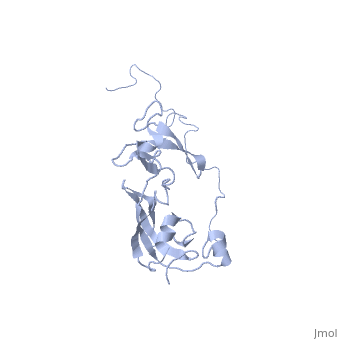The Escherichia coli sensitive to lysis D (SlyD) protein
From Proteopedia
FunctionSlyD is a member of the FK506-binding protein (FKBP) family, it harbours prolyl isomerase activity, which is responsible for accelerating the rate-limiting trans-to-cis isomerization step in protein folding[1]. Structural highlightsIn solution, SlyD folds into two globular domains, namely the Tpeptidyl-prolyl cis–trans isomerase (PPIase) domain and the IF domain, bisected by a deep cleft. The PPIase domain of SlyD possesses a β4–β5a-β5b–α1–β2–β3–α4 topology, and folds to generate a twisted four-stranded antiparallel b-sheet wrapped around the α1-helix and flanked by the α4-helix. The IF domain of SlyD displays a β6–α3–β9–β8–β7 topology, and folds to generate a four-stranded antiparallel b-sheet bordered by a short α3-helix[2]. This is a sample scene created with SAT to color by Group, and another to make a transparent representation of the protein. You can make your own scenes on SAT starting from scratch or loading and editing one of these sample scenes. DiseaseRelevance3D structures of SlyDPeptidyl-prolyl cis-trans isomerase
|
| |||||||||||
References
- ↑ Scholz C, Eckert B, Hagn F, Schaarschmidt P, Balbach J, Schmid FX. SlyD proteins from different species exhibit high prolyl isomerase and chaperone activities. Biochemistry. 2006 Jan 10;45(1):20-33. PMID:16388577 doi:http://dx.doi.org/10.1021/bi051922n
- ↑ Martino L, He Y, Hands-Taylor KL, Valentine ER, Kelly G, Giancola C, Conte MR. The interaction of the Escherichia coli protein SlyD with nickel ions illuminates the mechanism of regulation of its peptidyl-prolyl isomerase activity. FEBS J. 2009 Aug;276(16):4529-44. Epub 2009 Jul 23. PMID:19645725 doi:10.1111/j.1742-4658.2009.07159.x

